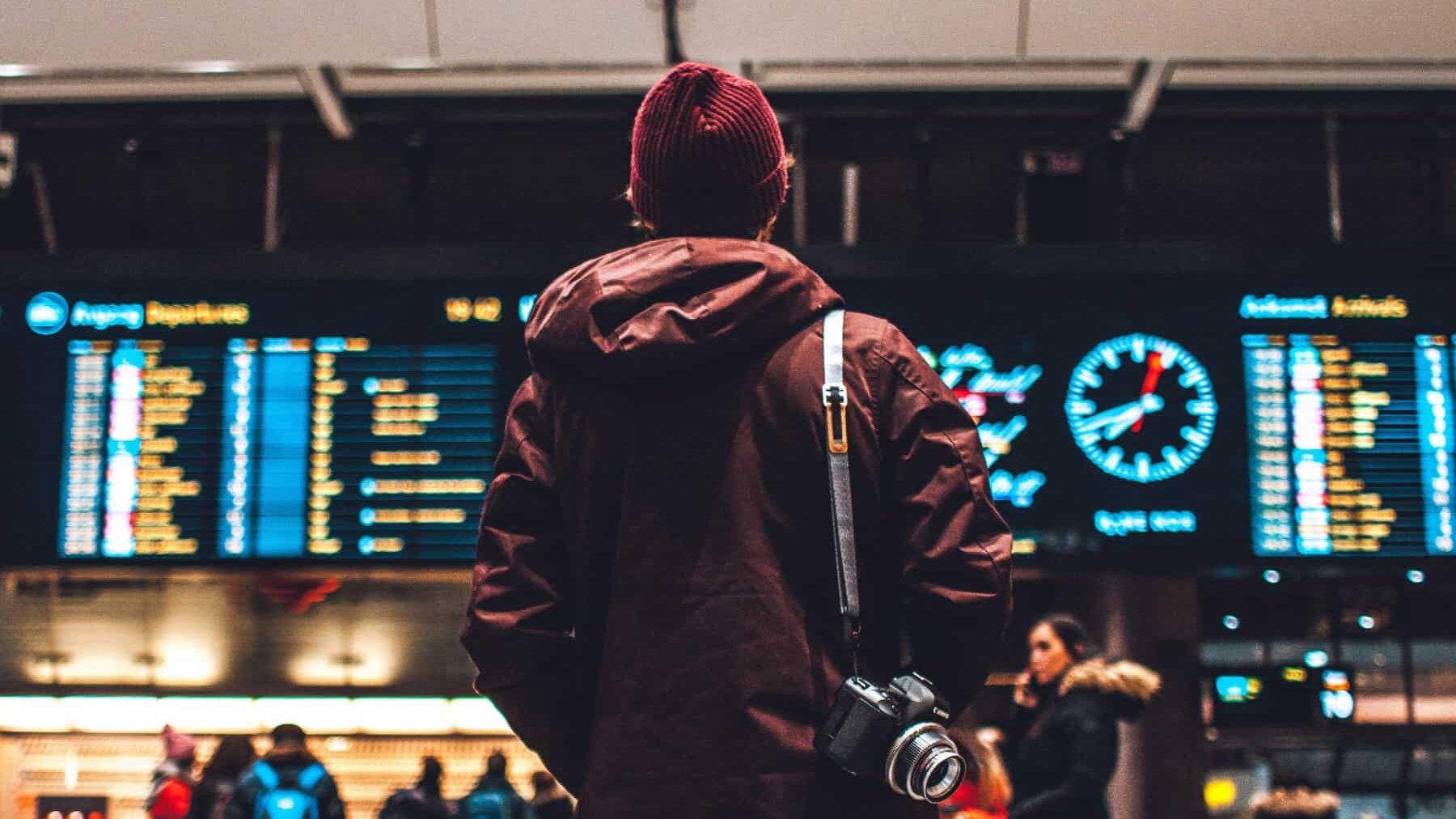Working for an airline provides a great opportunity to travel the world for a significantly reduced cost, but the process of flying standby can be daunting. While you’re anxious to use your travel benefits, you’ve probably heard horror stories of days spent stranded in the airport as flights go out full. But the good news is this: with proper planning, flexibility, and a pinch of luck, you can be sleeping under the stars in your dream destination instead of under the bright lights of the airport terminal. Read on as our guest blogger Josh from Cleared List shares some of his best tips for planning the perfect standby trip.
Finding a destination: the right place at the right time
To increase your chances of finding flights with empty seats, take vacations in the off-season such as February and November. If you must travel during peak times, fly mid-week instead of weekends or go where no one else is going. For example, skip the beach resorts over the Christmas holiday. Instead, bundle up and head north for the Aurora Borealis light show in Iceland or Norway.
Get inspired
Don’t know where to go yet? The StaffTraveler blog has plenty of inspiration! Need a bit of motivation to pack your bags and go? We’ve got you covered.
Research regional trends
It’s also important to understand regional holidays. Simple Google searches will teach you a lot about the peak vacation times for regions around the world. For example, February is a great time to fly standby in the Western Hemisphere; however, in Asia, families take time off to celebrate the Chinese New Year. You’ll be in for a rude awakening if you land in Hong Kong and expect to find a cheap last-minute hotel or open seats on an inter-Asia flight. On my blog, Cleared List, I post a few suggestions for off-peak standby destinations for each upcoming month. Rove.me is another excellent resource. This website suggests the best countries to visit based on climate and activities during the dates you select.
Visa requirements
Speaking of China, countries with visa requirements make great standby destinations. Most people don’t want to pay the up-front cost of obtaining a tourist visa, so you’ll be competing with fewer standbys for the remaining seats on flights to places such as Beijing, Rio de Janeiro, and St. Petersburg.

A note on flying standby to tropical destinations
Destinations in the mid-latitudes such as Southeast Asia and Central America, typically have a dry season and a wet season. If you can handle a little bit of rain, the wet season is a great time to experience these places with plenty of open seats, cheap hotel deals, and fewer crowds. Do some research as rainy season varies by place and time from a casual afternoon shower to dangerous monsoon downpours. The transition period between these two seasons, known as the “shoulder season,” is another great time to visit tropical destinations.

Check the forecast
Most travelers are locked into a destination months in advance, helplessly praying for good weather. Flying at the last minute on standby, you can look up the forecast before deciding. Calling for rain all weekend? Why not switch it up and try somewhere else. Remember to be flexible.

Shoulder Season
- Cambodia & Thailand April & October
- Central America September-November
- Hawaii May & September
- Indonesia May-June & September
How to get there

Now that you have a place in mind, it’s time to dive into the details on how to get there. In most cases, these are three methods of traveling, and you should be familiar with each in case “Plan A” doesn’t work out.
1. Pass riding on your airline
This is option number one for multiple reasons. First, this is the cheapest option. Most airlines allow their employees to travel on company flights for free or significantly reduced cost. Secondly, your priority will be the best. Airlines give away empty seats to standbys in a rigid hierarchy and pass riders who work for the company always go first. Your airline should provide information on how to lookup loads and list yourself for flights. The loads can change at any time so it’s generally a waste of time to look at them more than a week before the flight.
2. Pass riding on other airlines
Your airline most likely has reciprocal agreements in place with a multitude of other airlines. This allows you to expand your map and travel to far-off places your airline doesn’t serve on its own. These tickets are a great deal but unfortunately they’re not free and you will be boarded behind pass riders who work for the respective company. These days, most agreements are run through the ZED (zonal employee discount) program. The airfare is based off the flight segment mileage and the fare level agreed upon by the carriers (ZED low, ZED medium, or ZED high). Your airline should provide a list of available airlines and details on how to list for flights. When it comes time to check the loads, don’t forget about StaffTraveler! Download the app to request load information from a network of thousands of employees representing nearly every airline.
3. Traveling confirmed
Even though you can fly standby, it’s always worth checking full fare options. Sometimes buying a ticket on a budget carrier can even be cheaper than a ZED ticket. You can look into trains, rental cars, and rideshares too. Enter your origin and destination into Rome2rio.com to see all methods of transportation with pricing between those points.
Using these options, make sure to come up with a few backup plans because loads can change at any time. Flightconnections.com is an excellent resource to browse route maps sortable by airport and airline.
Pack carry-on only
You need to pack carry-on only. If you check a bag, you can’t change flights at the last minute or make tight interline connections. So when planning your backup destinations, make sure the climates match. Trying to fit beach attire in with ski clothes will take up more room than you have in your carry-on. The exact dimensions vary by airline, but normally a suitcase must be within 9 inches x 14 inches x 22 inches (22 cm x 35 cm x 56 cm) to be considered a carry-on. The Travelpro Flight Crew 5 fits these dimensions perfectly and is used by flight crews around the world. I’ll use either my trusty Travelpro or the Osprey Porter 46. The Porter backpack is great for adventure travel and fits in the overhead unlike comparable bags. I also use packing cubes to help organize and compress clothes.
Dress smart
Getting denied on a flight just because your outfit doesn’t match the airline’s dress code must be about the silliest reason to miss your flight. In 2017, United Airlines denied boarding to two standby passengers for wearing leggings. Don’t be that person! Read my post on staff travel dress codes around the world before you get dressed!
Don't leave the gate
Don’t leave the gate until the plane has pushed back and is taxiing away! I can think of at least three times in my non-rev travels when doing just that landed me a seat on a full flight. The last time, on a trip from Seattle to Paris, my travel companion and I were at the bottom of a list of 20 or so non-rev standbys on an oversold (by 15) flight. At about 10 minutes prior to door closure, the gate staff told all non-revs to head to the service center and get relisted for the next day’s flight. We stayed put and at the last second there were two no-shows and we were rushed on and quickly seated… In two business class seats!
Tip by Chris King
Planning your trip
You found your destination, packed your bag, got a Lonely Planet… It’s time to get you there! Even if you have chosen an off-peak period to travel, your flights may well be overbooked. Obviously, you don’t want to spend the night on an airport bench. Luckily, you’ll most probably have multiple options to get to your destination. So how do you get to know your odds of getting on the flight? That’s where StaffTraveler comes in!
You can download StaffTraveler from the App Store or Google Play Store. Everyone who is eligible for staff traveling can create an account on StaffTraveler. The app enables you to get the loads of the flights you wish to take. You can easily request the seat availability of multiple flights, with different airlines or on different dates. Your requests will be answered by the people who work for the airlines that you have requested the loads for. Within minutes, you’ll have a complete overview of the odds for every flight. Flight overbooked? Maybe better take that other airline or wake up early to get that early morning flight!
Flying standby comes down to being flexible, always having a backup plan, and packing carry-on only. As long as you remember these tips, you’re well on your way to new adventures as a “staff traveler.”
Josh
Josh works for an airline in the US and spends his days off traveling the world on standby. His blog, Cleared List, features standby tips and destination guides to help you maximize your benefits.
10 Simple Rules for Non-Rev Travel
As a seasoned non-rev enthusiast, I’m often asked whether non-rev travel…
5 Reasons why you Should be a StaffTraveler
Being a StaffTraveler has many advantages. Having access to accurate and…
Flying in Style: Staff Travel Dress Code Made Easy
With recent controversies like the leggings incident on United Airlines,…







I would like to find information for people transitting as nonrevs through Abu Dhabi or Doha. Can anyone provide information for transitting nonrevs (i.e., visa requiremens or transit visa, where to go to check in, etc.)? If I do not get on a flight and have to go to a hotel, what kind of visa will I need?